#austro bohemian composers
Text
GUSTAV MAHLER: A PARTIAL NATAL CHART ANALYSIS (HOUSES 1-6)
🧿DO NOT STEAL MY WORK OR KARMA WILL FIND YOU.🧿

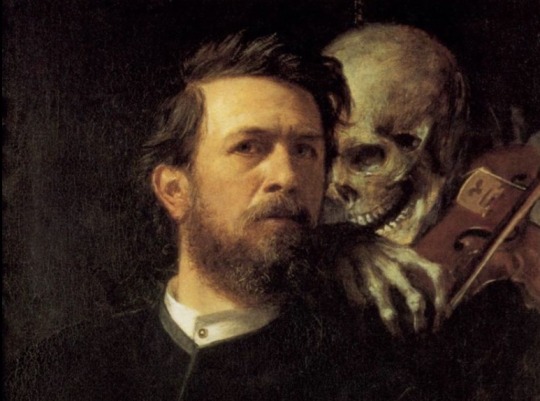
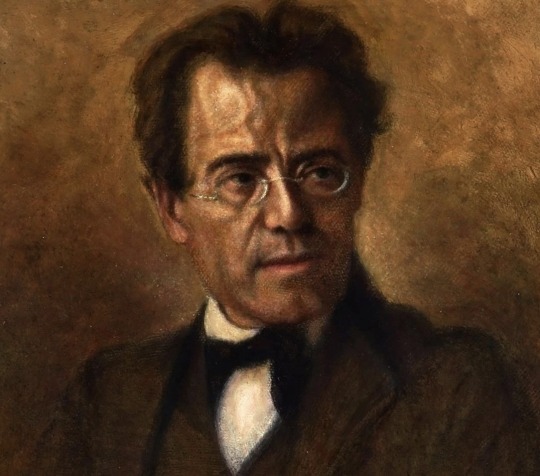
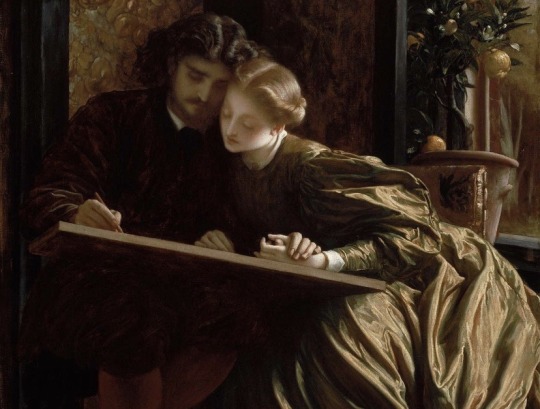

hey guys :) i was searching through my old projects and i found this! i did this analysis for a creative project in order to get my position as drum major. if it seems too over-explanatory, it’s because i was describing all of this to people who didn’t know anything about astrology. also, this was written like a year ago, so my knowledge on astrology and placements has definitely expanded since then. if anything seems “out-of-date,” that’s why. either way. i hope y’all enjoy!! i had a lot of fun making this post to share this analysis with you all!! :) <3 (also i do not know the titles of these paintings. i do know that the middle one is mahler, though! so if anyone can tell me the names and their artists, it would be much appreciated!!!!)
WHO WAS GUSTAV MAHLER?
Gustav Mahler was a composer during the romantic period. He is of Austro-Bohemian decent, and is best known for his 10 symphonies. A fun fact about him is that a the main tune for “Be Our Guest” from Disney’s Beauty and the Beast came from his Symphony No. 3. Like most amazing artists, he didn’t become famous until years after his death. The performance of his music was banned in most of Europe during the era of Nazi rule and later rediscovered by new listeners. Since then, he has become one of the most recreated composers and has since kept this position going into the 20th century. (source(s): https://en.m.wikipedia.org/wiki/Gustav_Mahler, https://www.cartoonbrew.com/disney/be-our-guest-and-mahlers-symphony-no-3-54610.html)
INTRODUCTION:


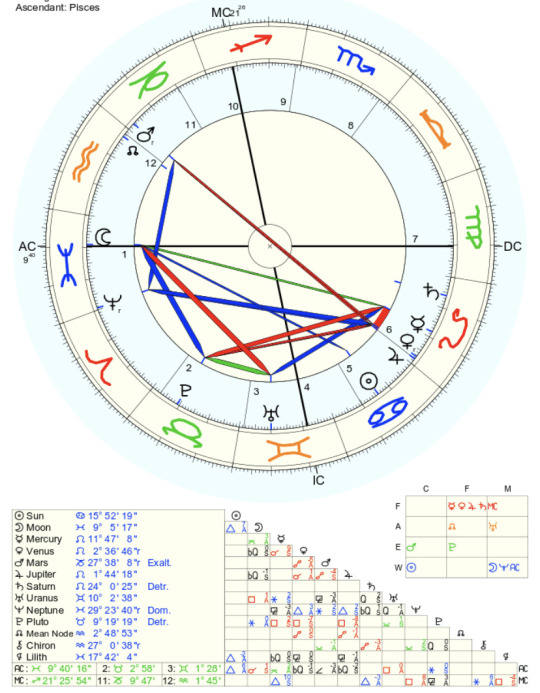

This is Gustav Mahler’s birth chart. He was born on Saturday, July 7, 1860, in Kalischt, Czech Republic at 10:15 p.m. Everything in a chart has an important meaning; from the degree, to the house, to the sign, to the planet. To give a breakdown, the top left of the screen is his birth time information, below that is his planet’s signs and degrees, the tiny chart below that is the elements and modalities in his chart, and the tiny triangle under that are his chart’s aspects. To the right of all of that, is his chart. Each chart has 12 houses. These houses start from the AC, or the ascendant. However, today, I will only be evaluating 6 out of the 12 houses.
As you can see from Mahler’s chart, his ascendant is in Pisces at 9°. His first house also contains his Neptune, which is the planetary ruler of Pisces. From the other charts of talented musicians that I have evaluated, a lot of them seem to have heavy Pisces influence. This even extends to the talented musicians within our own community. (3 of excellent musicians in the band) are all Pisces suns. My brother has multiple planets in Pisces, which forms a stellium in his chart. A stellium is when 3 or more planets are in a sign or when 3 or more planets are in a house. Sometimes, these 3+ planets can ALL reside in the same house, which focuses a ton of energy of that chart towards that house.
STELLIUMS
In reference to stelliums within Mahler’s chart, he has a stellium in Leo which resides in his 6th house. His Venus, Mercury, Saturn, and Jupiter are all in Leo and all reside in his 6H.
However, we will get to what all of that means later. As of right now, I want to break his chart down house by house, planet by planet, sign by sign.
HOUSE 1: THE HOUSE OF SELF
So, let’s start with the first house. As I said before, Mahler has a Pisces ascendant, so his first house is in Pisces. His first house contains his Neptune at 29°. The first house represents how we see ourselves and others’ first impressions of us when they meet us. The planets or sign of this house can ultimately affect our personality, and the 1H is The House of Self.
Neptune is the ruler of illusions and delusions, intuition and dreams, mysticism, the imagination, mental illness, the unknown, and is a major pinpoint of isolation (along with Saturn). This planet is also said to rule celebrities, as they give the public an illusion of what they’re like vs. what they’re actually like. His Neptune is in its house sign of Pisces, so the sign and the planet are in harmony meaning they will act in the same mannerisms. However, his Neptune is at 29°. 29° is the highest degree at which signs in planets can go to, making this a critical degree. 29° emphasizes the energy of the planet and its rulerships and can even signify fame. This degree is ruled by Leo.
Mahler was known, according to Connolly Music, to “suffer from skepticism, nervous tension, and an obsession with death.” The fact that Neptune is so prevalent in his chart is one of the main reasons why he is this way. The themes of Neptune and its critical degree, as you can see, affected his overall personality.
About the unknown and mysticism part of Neptune, Mahler hid from his wife the fact that he was Jewish and even converted to Christianity in order to have a successful conducting career. Alma, Mahler’s wife, was insanely anti-semitic, and never knew he was Jewish for a long time.
About the isolation part of Neptune, Mahler had a composition hut in Austria in which he used to finish his Second and Third Symphony and a few songs from his Des Knaben Wunderhorn. Funnily enough, this hut was positioned by Lake Attersee. Neptune, in Roman mythology, is known as the God of Freshwater and the Sea. Not only did he like to work in seclusion, he also liked to work near a body of water. He was also known as “an avid swimmer and mountain walker.” It’s just very funny for me to see things like this work hand in hand.
HOUSE 2: THE HOUSE OF VALUE
Mahler’s second house is in the sign of Taurus. While it should be in Aries, Mahler has what is called Intercepted Houses. This is when the sign of a house skips or repeats itself. However, this doesn’t mean that Aries does not exist in Mahler’s chart, however all 30 degrees of it is in the 1H. The reason why this happens is because the northern and southern latitudes of the 12 houses are not evenly spaced. This results in a sign being hidden and not easily accessible, though it is still there.
In this case, the house intercepted is in Aries. Aries governs over confidence and passion. It is ruled by Mars. As we can see by the description of Mahler’s personality, he suffered from skepticism and feared the unknown. He was unable to channel that Martian energy in his chart, thus leaving him unconfident.
Moving forward, the second house governs over personal finances, material items, self worth, and inner desires of gain. This house could also express one’s system of values. Mahler has his Pluto in the 2H in Taurus at 9°. Taurus is ruled by Venus and governs over the 2H, so it's right at home here. Pluto is the planet of destruction and transformation. When this is in the house of finances, a lot can go wrong as well as right. In terms of money, this route can take extreme rises as well as extreme falls. The people who have this placement can either be born into humble circumstances or be born into vast wealth. Mahler, of course, was born into humility, and had multiple rises and falls in his income. People with this placement also tend to have a small view on themselves and have a desire for control. This was very evident in the way that Mahler was described.
Since his 2H is in Taurus and intercepted houses are in effect, this means that four of the houses that continue after will be under their traditional sign of rulership. In Mahler’s chart, this is his second, third, eighth, and ninth.
HOUSE 3: THE HOUSE OF COMMUNICATIONS
The third house in Mahler’s chart is in Gemini. The third house rules communication, siblings, early education, perception, and transport. His Uranus resides in this house at 10°. Uranus rules everything eccentric, unpredictable, and creative/scientific brilliance. Having his Uranus in the 3H is a symbol of some kind of genius, though they often struggle in school.
Many reports say that Gustav Mahler was very “unreliable” in his academic school work. In order to fix this, his father had sent him away to the Newtown Gymnasium in Prague. Then, he ended up going to the Vienna Conservatory in order to study music. Here, Mahler’s rebellious flag flew as well, though he graduated. This is a fine example of transportation and struggling in school that Uranus so represents in the 3H.
Another example of his Uranus in the 3H working is that his siblings and their relationship with them weren’t “conventional”. His sister, Justine, had extreme possessiveness over Mahler and even went to extremes to make sure his romances were ruined. This was before he met Alma and told Justine that her behavior couldn’t continue. This encounter ruined Justine’s relationship with her brother. Many of Mahler’s siblings died during his early childhood including his older brother, who would’ve been the oldest of the 14 had he not passed. He also assumed responsibility for all of his surviving siblings after the death of his parents in 1889. This “unusual” responsibility can also be represented by the 10° that Uranus is in. 10° is under the rulership of Capricorn, which is ruled by Saturn. Saturn rules responsibility.
HOUSE 4: THE HOUSE OF HOME
Again, intercepted houses are at play here. Mahler’s fourth house is also in Gemini. There is not a planet in this house, meaning that only the sign is affecting this house. This also means that there is less tension pointed to this house in his chart. The 4H rules family, home, parents (specifically the mother), and the emotional base of our satisfaction.
Since Gemini is in this house, Mahler’s family life and home was constantly changing. This is very evident in his constant moving-about during his early childhood. Gemini in this house can also talk about a specific connection between one parent, though emotions in this sign are often rationalized. Mahler had a strong relationship with his father, who supported him in what would eventually be his career (music). He cared a lot for Mahler to make a stable income and put this first. Funnily enough, the 4H opposes the 10H, the house OF career.
HOUSE 5: THE HOUSE OF PLEASURE
When we talk about the 5H, we usually associate it with pleasure. This pleasure is usually derived from self-expression, creative hobbies, desire, children, and the showing of individuality. This is one of my favorite houses to talk about in astrology and placements here make it all the more interesting. Mahler’s 5H is in Cancer, the sign of emotional/physical well-being and comfort.
Traditionally ruled by Leo, Mahler’s sun in Cancer at 15° is right at home here. To me, the sun shines the brightest here because it’s in its home house. Since it’s the only planet here, it’s definitely giving the most energy.
A great explanation as to how rulership works out in astrology would be how Mahler passed away. The only reason why I bring this up here is because his 5H shows kind of a preview of what he was under before he died.
Mahler found out his heart was defective after his daughter, Maria Anna, died of scarlet fever. The discovery was made immediately after her passing. He was very stressed out beforehand and after her death, expressing his exhaustion was very hard. I believe this took a toll on his health, as he was unable to properly express himself and stress tends to build up in the heart.
He performed his last concert and left for Europe. He then was taken to a sanitarium to be treated. A few days later with no improvement, Mahler passed away. He was buried next to his daughter Anna Maria, as per request, on May 22 with only his name on his tombstone. He said this to be so because “any who come to look for me will know who I was and the rest don’t need to know.”
His death can also be represented in his sixth house, which I will further explain when we get there.
HOUSE 6: THE HOUSE OF HEALTH AND OCCUPATION
Out of all of the 12 houses in astrology, this one is definitely in my top 3 to discuss. The 6H can tell us so much about our potential careers as well as what our health could look like. This house rules health, occuations, and physical limitations. Though this house is traditionally ruled by Virgo, in Mahler’s chart it’s in Leo.
As I said before, Leo rules self-expression. One of the many ways of self-expression is performance. Frankly, if you haven’t noticed, Mahler’s got a lot of Leo in his 6H; he’s got a stellium, so it isn’t exactly surprising that he chose a career where his self most resonated and could be displayed in the public with an artistic flair. He also has his Venus, the planetary ruler of music and all things art, in this house as well at a powerful degree. Venus in his 6H is at 2° . 2° is ruled by Taurus and is often called the degree of power. It’s a very ambitious degree to have and it’s often what we pursue. 2° here under Venus shows that Mahler pursued music and put all of his ambition into it.
Here alongside Venus, are Jupiter, Mercury, and Saturn. Jupiter makes a conjunction to his Venus. Jupiter rules expansion, education, joviality, and abundance. When it is in a positive aspect to Venus, Jupiter enhances and expands Venus’s properties. This is an aspect I see in a lot of musicians as well, so I thought I would mention it here.
Like I said when I was discussing the 5H, there were a lot of factors in the 5H and the 6H that portrayed a preview of what Mahler was under before he passed. Since the 6H rules health, the 6H can tell a lot about the illness that caused Mahler’s death. Like the 5H, there is Leo influence. This again is pointing towards the heart problems that Mahler had with his heart as well as his job as a musician. Whenever my brother told me that Mahler had died of a heart condition, the first thing that caught my eye was his stellium in this house. I told him that it wasn’t surprising considering the huge amount of Leo influence here.
Mahler overexerted himself and then died in a sanitarium. Both of these things are represented by the 6H. When Mahler was on his deathbed, many people went to visit and expressed how much they loved him. Attention is ruled by Leo and Virgo/6H can represent places where health purification takes place. Him also having Saturn here, the planet of long-term effects and karma, indicates that his health issues had a long-term effect on not only him, but the people around him and that his daughter’s death could have been a factor leading to his death as well. All things health related can be pointed to the 6H and I think it is one of the easiest houses to read in astrology.
DEGREES:
Below, I listed some degrees that were indicators of his success and degrees that repeated.
Degrees of Fame and Success within Mahler’s Chart:
Neptune at 29°.
Venus and North Node at 2°.
North Node is our “path” in life and Mahler having this at 2° in Aquarius (ruled by Uranus, planet of eccentricity and community) proved that he was meant to do something that while was different from other people, was still extremely influential. His North Node resides in his twelfth house.
Repeating Degrees:
9°, 21°- Sagittarius Degrees
Sagittarian degrees, like all degrees, add the characteristics of a sign to the body it’s effecting. Sagittarius rules freedom, passion, and intellectuality. Mahler was incredibly passionate about what he wanted to do and he wanted to do it his way. Despite his uncertainty about the people around him and his true identity, he knew he found some sort of comfort in creating and learning about music while having the freedom to do so.
2°- Taurus degrees
2° is the degree of power and has extreme influence. This influence can be used for good or bad, and I’m thankful Mahler used it to elevate his musical career.
CONCLUSION:
I think all of these situations being displayed in Mahler’s chart can show that astrology can have the ability to predict events or tell of events that have already passed. Of course, you still don’t have to believe in everything I said here, I just think it’s neat! I only did 6 out of the 12 houses because this would have been probably 20 or more pages worth of information, and I did not want to make this longer than it already was. Either way, I hope you enjoyed! :)

© thee-achilles 2023
#Spotify#thee-achilles#astrology#astro community#astro tumblr#thee achilles#astro talks#astroblr#astro observations#astrology observations#drabbles#protection#🧿#gustav mahler#musician#romantic period#astrological observations#astrologer#astrology placements#astro notes#astro placements#astrology asteroids#my analysis
50 notes
·
View notes
Note
are there any other historical figures you like I'm intrigued 👀
Okay buckle in, somehow this post will be weirder than any of my f1 stuff bcs for some reason I'm very intense about historical figures, I think I just have a tendency to treat them like blorbos
Mostly I'm endeared to powerful figures, idk why, it's the way it is. Okay so obviously you already know I like Napoleon(and Wellington to an extent), that really doesn't need to be emphasized anymore
Since being in Austria, I feel super endeared to Maria Theresa. She just seemed like such a boss! I think she's just really cool. Her father changed the plan of succession so she'd become Empress(rather than her cousins), but immediately upon taking power, she was immediately embroiled in war over her being the new ruler(everyone who had signed the treaty of succession suddeny reversed) But she defended her rule of the Habsburg monarchy! I think the coolest part about her is that her husband, who married into the Habsburgs, was supposed to be in charge, but she wouldn't let him be involved at all practically and was the de facto ruler of the Holy Roman Empire for like 20 years. She had 16 children and was basically constantly pregnant and having kids while involved in war, yet still held power and guided Austro-Hungary through it all 🥹 I think it's very funny also that she was laying out so many reforms, guiding the country basically just herself, and still found time to write letters to all their kids and be an overbearing mother. Also she was Marie Antoinette's mother?? I'm still shocked by how many important kids she had. If you've been to any part of the former Austro-Hungarian(+ Bohemian) Empire, she really left her mark, there's soooo much stuff named after her. The statue of her in between the Kunsthistorisches and the Natural History Museum in Vienna is really cool, and that she has a whole Platz named after her with her giant statue!!! I think it's just really admirable that a woman at that period of time had so much power and ruled so efficiently. (MY god sorry I wrote so much)
Okay now I'll try to refrain from the historical rambles, I also like: Julius Caeser(cliche sorry I know), Dmitri Shostakovich(my favorite composer ever), Pyotr Tchaikovsky(pls read about his sugar mommy patron), Erwin Rommel(I like his nickname: The Desert Fox), J.C. Leyendecker(favorite artist, I am obsessed with his work), Alphonse Mucha, Calvin Coolidge(not the best president by far but the anecdotes about his social awkwardness and quietness are hilarious to me), Ernst Gideon von Laudon(not completely insane about him, but it's like with the Napoleon Crossing the Alps painting, I saw a painting and bust of him and now feel weirdly endeared.) And then there's probably some others I can't recall atm because it's 3 am
I think my top three though are Napoleon, Julius Caesar and Maria Theresa. They're all just very: "Catie saw a painting/statue and is now very weird about it." And then being in the vicinity of so much history made it 1000x worse. Things I saw in Vienna that made me go "oh my god it's blorbo from my history book": Napoleon Crossing The Alps painting(I seriously sat in that room for probably 20 mins just staring at it, I didn't want to leave) + some other various Napoleon artifacts in the Heeresgesichtliche, a very nice bust of Julius Caesar, and literally the entirety of Vienna had Maria Theresa everywhere
#i said before but i do think its funny to have historical blorbos bcs it makes people go 'what is wrong with you'#all my friends on that trip soon learned my napoleon obsession once we stepped in that museum....#you guys are learning too much about my psyche between this and the OC posts#you thought I was unhinged only about F1? dont worry. it gets worse.#i just like reading and then holding info i guess so i can go on random rants#and history is the best to read about!!#mostly though im incapable of being normal about anything i have to be unhinged about it#but gahhhhhh im having actually a lot a lot of fun with all the napoleon stuff lately#thank you guys for encouraging me <3#for some reason that era imprinted on my brain and its always there and i cant escape#so being able to use it and indulge in it is so much fun#also i found this random person's blog and they are way more knowledgeable abt Napoleon than me#i was having so much fun reading through their blog and learning!!!!#anyways yes here pls take my rambling this one is especially bad#why did you have to ask 😭 you dont know what you unleashed in me 😭😭😭#* gotta add#the napoleon thing is sooooooo bad#like ill see a tiny ref to him and ill get all 😍 about it#like i think one time in Russian we were reading names of historical figures in cyrillic#and i saw napoleon and i like had such a 'gasping maiden' moment#WHY AM I LIKE THIS WHY DID MY BRAIN DO THIS TO ME#i dont get it either so dont question it JDKFLGLG#i mentioned but someone asked me 'so why do you like napoleon so much' and im just ?????? i dont choose what i brainrot over.#catie.asks.#catie.rambling.txt#sorry its late and i feel deranged#no FPs for me! too busy and too tired
8 notes
·
View notes
Note
I love that we discovered so much about Anna in this new chapter. Finding out that Anna was a college student fascinated me.
As I have read women in Europe began actively attending college even earlier than women in the United States.
By World War II it was already very common for women throughout Europe (at least for the most part) to attend universities composed of both men and women. In the United States, on the other hand, although there were women-only universities, there were still very few women attending.
I think it is right that Rooster is not surprised to discover that Anna was a university student and part of the resistance. Because for during WWII the U.S. Navy created the WAVES branch for college women to enter the Navy at officer rank and serve during the war. So I guess Bradley has already met several of those women.
Even in England there were all-female aviation squadrons during WWII.
I found it so sweet and yet so sad how Anna felt the need to explain to Rooster why she was so nervous at that moment during the night. It was quite melancholy how Anna wanted to let Bradley know that she used to be an ordinary girl before the war, which is true.
You are absolutely right, and just to add a little bit more context for Czechoslovakia specifically (im probably going to write too many words here so i'll put it under a keep reading)
The interwar years, or the First Republic, are broadly considered a time of progress: socially, economically and militarily. In particular, it saw almost all institutions open to women/become co-ed and which resulted in (a relative) surge of in women becoming practicing professionals as medical doctors and lawyers, professors, but also in a number of technical fields and entering the workforce in different vocations. This is in part through the influence of the first First Lady of Czechoslovakia, Charlotte Garrigue Masaryk, who herself was well-educated (and American-born) and was quite clearly a heavy influence on her husband when it came to matters of education equality (even before he became president in 1918).
(not to leave out the efforts of other female Bohemian writers, thinkers and activists that were also active and successful during Austro-Hungarian times, but that's another topic)
That said, Anna would have still been part of a minority as a female student, even though a generation of graduates and professionals already preceded her and established a place in society. But the opportunities presented to her, academically and professionally, would be like night a day almost compared to pre-WWI—when girls for example could only take final exams at private schools, when boys could go to public school (and that after almost 200 years of compulsory 8 years of primary education for boys and girls >.> ). Austria-Hungary was actually relatively slow in establishing equal rights to education compared to many western countries, and real change only came about after the break-up of the empire. Anyway, I think that she is conscious of that, and that it's of definite influence on how she acts and perceives the world around her and her place in it.
And I agree on that Rooster would, again in the grand scheme of things, not be that surprised. Definitely through his experiences and what he must have seen in the U.S, and the U.K. of women not only entering the armed forces but also the workforce at large as you pointed out. But at that time at the eastern front, women saw active combat as snipers, in artillery and tank divisions (although, it should be noted that the majority of women in the armed forces there, too, usually served in medical units). And moreover, generally, all through Europe, women played pivotal roles in national resistance movements.
One particular example that always comes to mind is Hannie Schaft, of the best known resistance fighters in the Netherlands, who was executed by Dutch Nazis at only 24 in 1945. (and probably apocryphal, but after the first bullet only grazed her, she told her executioner "I shoot better!" — tbh i want that to be true so badly).
Okay, if you actually made it through that whole word vomit above haha, thanks 🧡 and thanks for reading the story, your comments make me super happy!
#pisu answers#just to add#the interbellum period is not actually my specialty#neither is social history#but thanks for coming to my unhinged ted talk!
4 notes
·
View notes
Text
1911 – Gustav Mahler

Gustav Mahler (German: [ˈɡʊstaf ˈmaːlɐ]; 7 July 1860 – 18 May 1911) was an Austro-Bohemian Romantic composer, and one of the leading conductors of his generation.
1 note
·
View note
Text
Concert Review: ‘Marin Conducts TITAN’ presented by the Baltimore Symphony Orchestra at the Joseph Meyerhoff Symphony Hall/Strathmore
Gustav Mahler (1860-1911), an Austro-Bohemian conductor-composer, once said, “As soon as I am in the midst of nature and by myself, everything that is base and trivial banishes without a trace.” Marin Alsop, the BSO Music Director Laureate, suggests we “consider our relationship to the natural world” through Mahler’s “Titan”—a title some scholars think is […]
See original article at: https://mdtheatreguide.com/2023/02/concert-review-marin-conducts-titan-presented-by-the-baltimore-symphony-orchestra-at-the-joseph-meyerhoff-symphony-hall-strathmore/
0 notes
Audio
Symphony No.8 In E Flat: Pt.2 - Final Scene From Goethe's "Faust” (Poco Adagio)
By Composer Gustav Mahler
Performed By Conductor Pierre Boulez And The Staatskapelle Berlin
#symphony no.8#gustav mahler#austro bohemian composers#romantic period#classical music#audio#audio post
150 notes
·
View notes
Text
The Intimacy of Gustav Mahler*
(Not fanfic, not explicit, not that kind of intimacy, lol)
This weekend I’ll be spending a lot of time with Gustav Mahler’s epic Symphony no. 2 (“Resurrection”), so I thought I’d write up a short post about it. Mahler once said, "The symphony must be like the world. It must embrace everything." And his symphonies really do. Mahler is most famous for his eclectic, “maximalist” approach to symphonic composition. Indeed, several of his symphonies require over 100 instrumentalists, one or more choirs, and singer-soloists--and take, on average, about 75-90 minutes to perform! But they also include interludes of exquisitely orchestrated, intimate chamber music. The fourth movement (“Urlicht”) of the second symphony is a particularly beautiful example of the latter. (It’s not too long, either!) Here is a performance featuring Gustavo Dudamel and the SBSOV Orchestra, with Anna Larsson as the mezzo-soprano (or, if you prefer, contralto) soloist. (Alas, my fav performance is not on youtube 😭)
https://www.youtube.com/watch?v=T6xwgalv-YI
*Gustav Mahler (1860-1911) was an Austro-Bohemian Jewish composer, and one of the greatest conductors of his age.
Music nerds 🤝 Thrawn nerds
#Gustav Mahler#Mahler#Maximalism#Second Symphony#Symphony no. 2#Urlicht#Does Mahler fanfic even exist?#I'll probably stick with Thrawn & Friends
10 notes
·
View notes
Text
Who was "The loveliest girl in Vienna" according to a 1965 song?
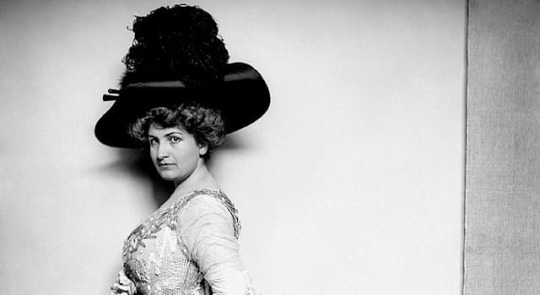
Austro-Bohemian Romantic composer Gustav Mahler is a well-known name amongst classical musicians, but far fewer are aware that his wife, Alma Mahler (1879-1964), was also a talented composer. During her career, Alma wrote approximately 50 works for voice and piano, but only 17 survive today. Unfortunately, Alma’s reputation in society had little to do with her talent, but rather her romantic liaisons with many men, three of whom she married. As singer and satirist Tom Lehrer (b.1928) said in 1965, before singing a song about the lady, “Last December 13th, there appeared in the newspapers the juiciest, spiciest, raciest obituary it has ever been my pleasure to read. It was that of a lady named Alma Mahler Gropius Werfel, who had, in her lifetime, managed to acquire as lovers practically all of the top creative men in central Europe.”
The song lyrics began "The loveliest girl in Vienna / Was Alma, the smartest as well, / Once you picked her up on your antenna, / You’d never be free of her spell."
Reports of Alma's promiscuity are largely exaggerated. Up until her marriage to Gustav Mahler in 1902, Alma produced several songs, twenty piano pieces and a scene for an opera. Her husband put an end to her aspirations, and Alma did not compose again until Mahler attempted to save their relationship in 1910. After 1915, Alma stopped composing altogether. As well as Mahler, she married Walter Gropius and Franz Werfel.
3 notes
·
View notes
Text
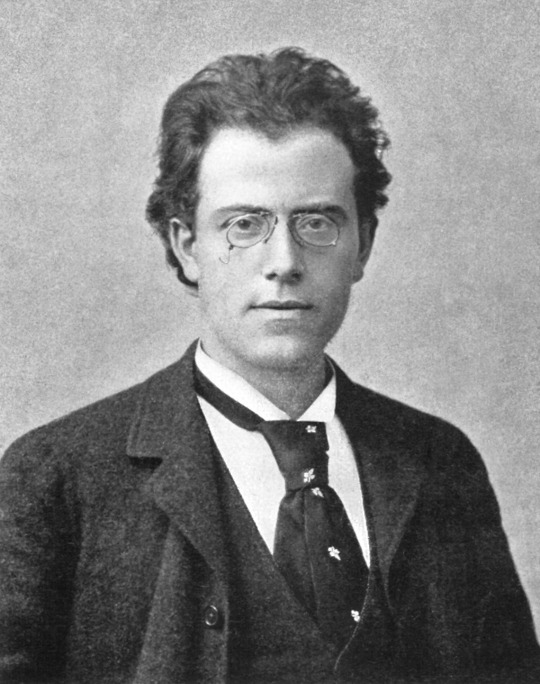
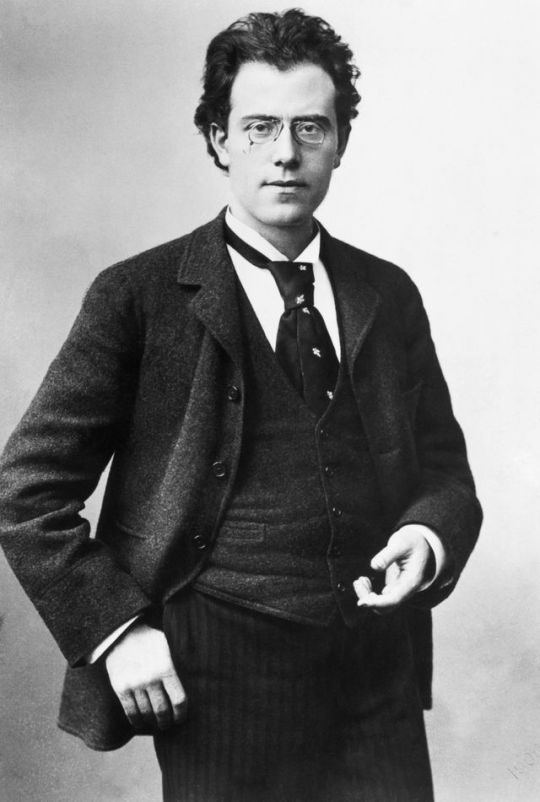

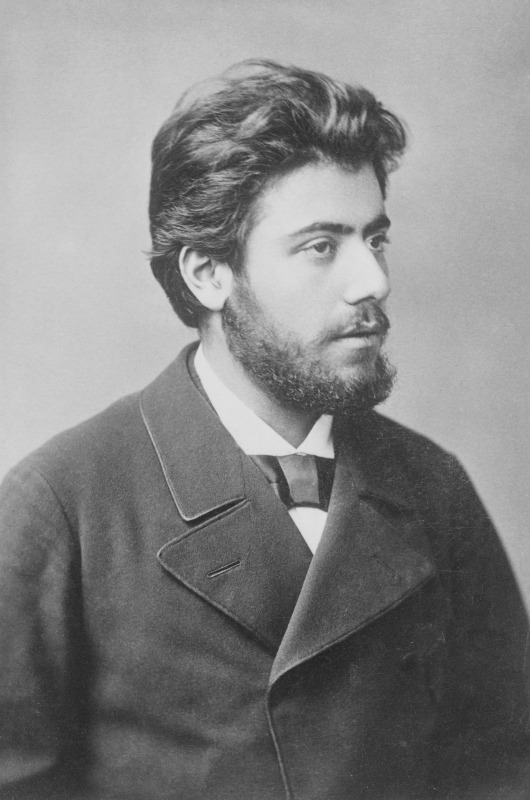
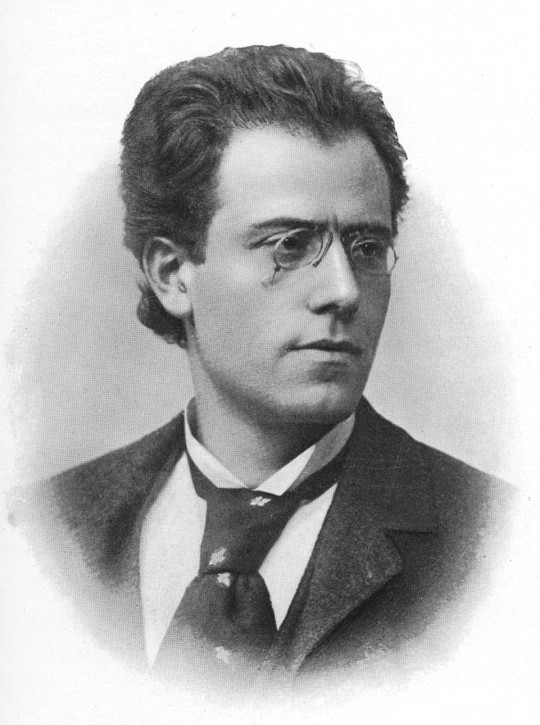

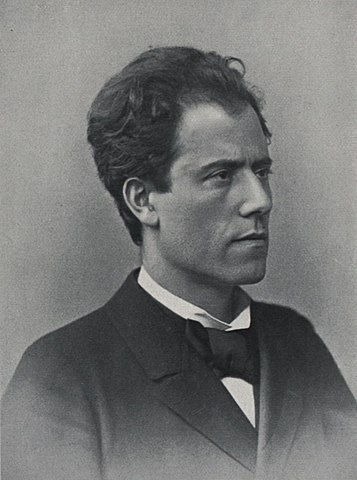
Gustav Mahler (1860-1911).
Late-Romantic Austrian composer.
.
He was an Austro-Bohemian Romantic composer, and one of the leading conductors of his generation. As a composer he acted as a bridge between the 19th century Austro-German tradition and the modernism of the early 20th century. While in his lifetime his status as a conductor was established beyond question, his own music gained wide popularity only after periods of relative neglect, which included a ban on its performance in much of Europe during the Nazi era. After 1945 his compositions were rediscovered by a new generation of listeners; Mahler then became one of the most frequently performed and recorded of all composers, a position he has sustained into the 21st century.
.
Born in Bohemia (then part of the Austrian Empire) to Jewish parents of humble origins, Mahler displayed his musical gifts at an early age. After graduating from the Vienna Conservatory in 1878, he held a succession of conducting posts of rising importance in the opera houses of Europe, culminating in his appointment in 1897 as director of the Vienna Court Opera (Hofoper). During his ten years in Vienna, Mahler—who had converted to Catholicism to secure the post—experienced regular opposition and hostility from the anti-Semitic press. Nevertheless, his innovative productions and insistence on the highest performance standards ensured his reputation as one of the greatest of opera conductors, particularly as an interpreter of the stage works of Wagner, Mozart, and Tchaikovsky. Late in his life he was briefly director of New York's Metropolitan Opera and the New York Philharmonic.
.
Mahler's œuvre is relatively limited; for much of his life composing was necessarily a part-time activity while he earned his living as a conductor. Mahler's works are generally designed for large orchestral forces, symphonic choruses and operatic soloists. These works were frequently controversial when first performed, and several were slow to receive critical and popular approval; exceptions included his Second Symphony, Third Symphony, and the triumphant premiere of his Eighth Symphony in 1910.
.
He was married to Alma Schindler. They had two daughters.
Mahler was by nature moody and authoritarian. Mahler insisted that there could only be one composer in the family and Alma gave up her music studies to accommodate him.
Mahler had a poor health (his heart was defective) and he died from bacterial endocarditis.
.
Some famous works:
Symphony No. 8
Symphony No. 5
Resurrection Symphony No. 2
Symphony No. 1
Symphony No. 3
[Submission]
#gustav mahler#Composer#music history#austrian history#19th century#classical music#romanticism#History#history crush#history hottie#history nerd#history geek#history lover#historical crush#historical babes#historical hottie#historical figure#historical#Historic
140 notes
·
View notes
Photo

Gustav Mahler (German: 7 July 1860 – 18 May 1911) was an Austro-Bohemian Romantic composer, and one of the leading conductors of his generation. As a composer he acted as a bridge between the 19th century Austro-German tradition and the modernism of the early 20th century. While in his lifetime his status as a conductor was established beyond question, his own music gained wide popularity only after periods of relative neglect, which included a ban on its performance in much of Europe during the Nazi era. After 1945 his compositions were rediscovered by a new generation of listeners; Mahler then became one of the most frequently performed and recorded of all composers, a position he has sustained into the 21st century. In 2016, a BBC Music Magazine survey of 151 conductors ranked three of his symphonies in the top ten symphonies of all time
16 notes
·
View notes
Text
“Mission-type tactics”
After the severe defeat of the Prussians by Napoleon in 1806 in the Battle of Jena-Auerstedt, the Prussian military rethought their military approach and aimed to build a college of military capability, the General Staff, as a systemic counter to the individual genius that had so soundly beaten them. Napoleon fought a continual battle of movement. Throughout his career (at least until the Peninsular war) he demonstrated his ability to defeat any enemy by the greater flexibility of his units and through better deployment. The fact that his troops were mainly composed of conscripts showed that it was his organisation of them and not their professional training that must have been superior. The institutionalization of excellence within the Prussian Army was to build this same flexibility as well as the other role of the General Staff Officer, which was to make sure each military unit understood and executed its mission.
One of the earliest alleged uses of Auftragstaktik was at the Battle of Königgrätz in the Austro-Prussian War. Auftragstaktik is one of the tools often claimed to have given the Prussians their decisive victory. This claim is difficult to accept, since no appreciation of Auftragstaktik had been accepted officially. The Bohemian Campaign could only have been an example of its use if having subordinate commanders that ignore directives from superiors, who march southward when ordered to march east, and treat their senior commanders with barely concealed contempt, can truly be described as a form of "flexible command".[12] Most of the Prussian commanders, particularly Frederick Charles of the 1st Prussian Army, had no understanding of Moltke the Elder's strategy. He did not much like those parts he did understand. He was uncooperative when under Moltke's orders and disobeyed them several times.[13] During the battle and without authorisation, he acted on his own initiative and launched a premature attack on the Austrian Army, which nearly ended in disaster. If the Crown Prince Frederick William had arrived only an hour later, the battle might have been decisively lost.[14]
2 notes
·
View notes
Text


"With the coming of spring, I am calm again."
~ Gustav Mahler, Austro-Bohemian Romantic Composer
1 note
·
View note
Text
1937 London fake RPG canon list: The Aristocracy
Harold, Earl of Lampeter: Aristocrat
PB: Jeremy Northam

Lord Lampeter is a well-respected Liberal peer and patron of the arts. As a young man he travelled widely in Europe, enjoying the culture of the Austro-Hungarian Empire at the end of the previous century in particular. It was while staying in Budapest that he met Ilona Kovacs, a bright and bohemian young poet from well-off merchant family. He fell passionately in love with her and she with him and, despite opposition from both sides, they married and returned to England. Moderate and quiet spoken in all views, he nowadays sits happily in the shadow of his wife, but when he does choose to speak out he is attended to. He prefers life in Wales, however, hunting and fishing, but hosts house parties and comes to London with a good grace to please his wife.
Ilona, Countess of Lampeter: Poet and Socialite
PB: Olivia Williams
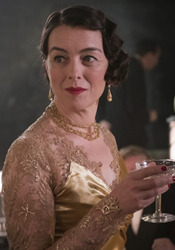
Ilona Kovacs was born in Budapest and was an artistic child in a family of non-religious Jewish merchants. Her particular passion and skill was for poetry and she was beginning to make a name for herself, having just published her first poem, when she met Harold. After a whirlwind romance, they married and Ilona returned with him to England. She has never been back to Hungary. In England, she swiftly became very popular – the brilliant, artistic, exotic countess. She continued to write poetry and made the Lampeters’ Welsh estate and London townhouse a centre for the arts and a safe haven for the intelligentsia and artistic community. Though she has not actively sought to conceal her Jewish identity, she has not embraced it either and it is only recently that she has begun to grow concerned for herself, her sons and, most importantly, the family she still has in Hungary.
Stephen, Viscount Tendring: Aristocrat
PB: Aidan Turner

Eldest son and heir of Lord and Lady Lampeter, Stephen has grown up in a privileged existence. Rather inclined to take his comfortable life for granted and ignore those aspects of the world he doesn’t like, Stephen is nevertheless a clever, witty man with a satirical mind which can express itself meanly when unchecked. Taking after his mother in many ways, Stephen is good with words and music though he is a dilletante who has not yet found his true passion. He is an excellent pianist, decent singer, amateur composer and has several beginnings of novels lying round the place. Mostly, however, he enjoys a life of leisure, secure in his inheritance but without any wish to hurry responsibility along, drinking cocktails and dancing with pretty girls.
The Honourable Mr. Nathaniel Morgan: Aristocrat
PB: Ben Whishaw

If Stephen takes after his mother, then Nathan certainly is more like his father. Just as clever as his brother, with a dry, self-deprecating wit, Nathan is a quieter fellow. He has been studying the Classics at Cambridge and has developed a particular interest in Greek philosophy. This has combined with a growing interest in his Hungarian and Jewish heritage and a profound anxiety over his own identity and place in the world. Unbeknownst to his family, he has begun to attend services at a Synagogue and is becoming increasingly involved in efforts to help Jews in Europe under threat from Hitler.
Miss Zsuzsanna “Lily” Klein: Painter
PB: Phoebe Fox
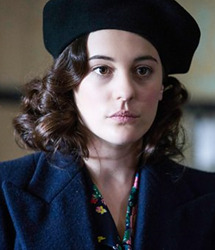
Lily Klein is the nineteen year old daughter of a good friend of Lady Lampeter from her Budapest days and is a distant cousin. Growing anxiety about the political situation in Hungary and the status of Jews there has led Lily’s mother to send her off to England on an indefinite visit to Lady Lampeter. Lily has decent school girl’s English and is torn between interest and excitement about not just being in England but staying within the aristocracy – it’s a romantic dream come true – and confusion, culture shock and a deep worry about her family and what will become of her and them. Lily is naturally introverted and prone to overthinking things, and the language barrier doesn’t help, but she has a passion for art and considerable talent as a painter and a part of her hopes that England will give her the fresh start it gave to her cousin.
Masterpost
Part of a RPG canon list that I will never make. But I love the characters!
#fake RPG#London 1937#this family is kind of based on my ancestors tbh#Lily Klein is exactly in my grandmother's position just before WW2#I'm really fond of this family
3 notes
·
View notes
Text
Ballet History (Part 21): Jean-Georges Noverre in Vienna
Like most 18th-century ballet-masters, Noverre lived an intinerant existence, organizing his own bookings, costs, fees, constumes, transportation and dancers. Charles Eugene dismissed him in 1767, so he wrote to the Polish king and to London, but with no luck. Finally, he managed to a get a position in Vienna, at the court of the Empress Maria Theresa.
When Noverre arrived in 1768, Vienna was the pivot of European theatrical life. It was the seat of the Habsburg monarchy, at the centre and crossroads of the great Austrian Empire. Performers were drawn there from all over Europe, and from there moved out onto a great circuit that extended to the German states and St. Petersburg. Vienna wasn't the wealthiest European city, and didn't have the greatest theatrical traditions. But by the mid-1700's, most dancers and ballet-masters ended up there at some point.
Maria Theresa had been the Empress for 28yrs, and Vienna was now a truly cosmopolitan city. Its nobility came from the German & Italian states, Spain, and the Austro-Hungarian lands (including Bohemia, Moravia, Silesia and Lorraine). The elite spoke French, and many were also fluent in German and Italian.
Maria Theresa and Emperor Francis I (who was at first merely her consort) greatly enjoyed French culture and art. But although court life was lavish, it was also more relaxed & open than in France. Maria Theresa was more inclined to domesticity, nursing her children when they were ill, and privacy was important to her – she liked pomp and informality just as much as each other. Francis I was a Freemason and “hermit in the world,” as he put it; he preferred hunting & billiards over theatre or cultivated living. So the Viennese noble life was never as rigid or constrained as in France.
Vienna had two theatres – the French Burgtheater and the German Kärntnertor, each with a ballet company made up mostly of Italian dancers. French influence was also strong. Back in the 1730's, the Viennese ballet-master Franz Hilverding had been sent to Paris at royal expense, where he trained at the Paris Opera with Michel Blondy (nephew and student of Pierre Beauchamps).

The Burgtheater, sometime before 1888, when it was moved to another building.
Hilverding returned with the French style, adept at the pastorals and allegorical ballets that were typical of Paris. But he soon cast aside a great deal of the French artifice, asking his dancers to remove their masks and to enact serious drama in pantomime, “true poems subject to the same rules as tragedy and comedy.” He staged ballets of Racine's Britannicus and Voltaire's Alzire, but we don't know much about what they looked like.
This was the beginning of a major reform drive that outstripped even what Noverre would find acceptable. In 1754, Maria Theresa appointed Count Giacomo Durazzo to direct the French Burgtheater. Durazzo was a widely-travelled Genoan who had strong ties to France. He was also close to the empress' Chancellor Wenzel Anton Kaunitz, a sophisticated Viennese aristocrat who'd lived and owrked in Paris, Turin and Brussels, and who became a strong supporter of ballet and the French Burgtheater.
Durazzo wanted to merge French & Italian musical & theatrical styles together, as a way of expressing Habsburg diplomatic policy. He recruited the Bohemian composer Christoph Willibald Gluck, and made contact with the Parisian producer Charles-Simon Favert. Favert sent Durazzo French comic operas to stage.
Gluck was well-versed in the light Italian operatic traditions, and quickly absorbed new styles and adapted Favert's productions to the local tastes. Hilverding worked with them at first, but in 1758 he left for a new post in St. Petersburg. Durazzo hired Gasparo Angiolini to replace him. Angiolini was Hilverding's former student, and a Florentine dancer & ballet-master.
Angiolini had significant literary interests, and was married to the dancer Maria Teresa Fogliazzi, who came from a prominent Parma family; they moved easily within the circles of educated society. Angiolini corresponded with Rousseau, and also with Giuseppe Parini and Cesare Beccaria (both figures of the Italian Enlightenment). Later on, he was active in Jacobin politics in Milan.
In 1761, Chancellor Kaunitz introduced him to Ranieri de Calzabigi, a librettist who had just arrived in Vienna after a long stay in Paris. Calzabigi was a great believer in the French Enlightenment; his ideas on music & opera were similar to those of Diderot and the writers of the Encyclopédie.
The trio of Angiolini, Gluck and Calzabigi broke from French comic opera and produced a new reform kind of ballet, in the same years that Noverre was doing just that in Stuttgart. Like Noverre, they created a taut, serious drama that subordinated dance & music to words and action. The French-style ballet divertissements had no place in their new art – Calzabigi noted impatiently that the dancers would just have to wait until the end of the tragedy to perform.
In pantomime, though, the dancers were woven into the performance. In 1761, Gluck & Angiolini created Le festin de pierre, ou Don Juan, with extended pantomimes tightly integrated into the plot – furies with blazing torches tormented Don Juan; demons gesticulated at the gates of a fiery hell before plunging him & themselves into the abyss.
In 1762, the trio created the opera Orfeo ed Euridice. In 1765, Gluck & Angiolini created Semiramis, which was a fully-fledged pantomime ballet with a plot from Voltaire's tragedy of the same name. Voltaire had written a dissertation sur la tragédie ancienne et moderne in his own Semiramis, and Angiolini wrote a similar “dissertation” on pantomime ballets, in which he explained that the point was to break away from the “enchanted worlds” that were typical of French opera, and instead make the audiences feel “those interior shivers which are the language with which horror, pity and terror speak within us.” Semiramis was 20min long, with themes of murder, matricide, betrayal and revenge.
But unfortunately, they chose to stage the ballet on the occasion of the marriage of the Archduke Joseph, Maria Theresa's son. It was found “far too pathetic and sad for a wedding feast,” and as such was an utter failure. One observor noted that the court and town were “revolted” by the ballet's action, in which the dancers had performed “not with the feet but with the face”. Clearly, Angiolini had gone too far, not making any concessions to the Viennese taste for French ballets.
So after that, he returned to a lighter mix of pantomime & dance. But Semiramis was an important ballet – a pure pantomime dance without any French ruffles, Noverre's ideas taken to their logical conclusion. Few could accept the complete lack of balletic ornamentation, even Noverre himself. It was more of a manifesto than a ballet, with its sustained intensity & violent imagery; it was too earnest & unrelenting to satisfy those who were more used to the French style. Semiramis, therefore, was at the outer extremes of the reform ballets of the 1700's.
(Durazzo left Vienna in 1764.)
When Noverre arrived in 1768 to replace Angiolini, the path to the ballet d'action was thus already paved for him, and he easily picked up where Angiolini had left off. He worked with Gluck on Alceste that year; Gluck agreed to hide the singers in the wings while the dancers pantomimed the drama onstage.
In 1774, they created Les Horaces et les Curiaces, music composed by Joseph Starzer, who was a longtime collaborator of Angiolini. The ballet was five acts long, with a programmatic score, telling Corneille's play in a series of dances, tableaux and pantomime.
Unlike Angiolini, Noverre was a complete success in Vienna, because he included French dances and lavish effects in his action-driven tragic ballets. He said, “I multiply incidents and theatrical tricks, I accumulate tableaux and people...I have preferred richness to firm consistency.”
Vienna was the perfect place for Noverre to work – it had the combination of French court tastes and the radical reforms of Gluck and Angiolini. He staged about 38 new ballets there, and the empress was so pleased with him that she appointed him ballet-master for her daughter, Marie Antoinette.
But it was still a difficult, insecure life, and while he was in Vienna he wrote constantly to London in Stuttgart, trying to get another position in either of those cities. Noverre had arrived in Vienna at the end of French cultural importance, and was well aware that his position was therefore precarious.
In 1765, the year after Durazzo had left, Emperor Francis I had died, and Maria Theresa's son Joseph had become co-regent. He also took charge of Vienna's theatrical life, but he was not a good choice for that. Joseph was severe and serious, and he despised ceremony, the required social activities of his mother's court, and the trappings & etiquette of the monarchy and aristocracy. He preferred military discipline and a private domestic existence.
He was determined to reform the empire in the interests of the people, and hoped to create an accessible German-language theatre that would be free of aristocratic control. This was a good idea, but he was disdainful of Noverre and his “French” ballets.
Chancellor Kaunitz argued constantly for continued royal support for the French Burgtheater, but Joseph explained that the state regarded its productions as “trifles,” and cut its funding. There was still the patronage of high-ranking aristocrats, but this was not enough, and the theatre couldn't recover. Kaunitz also protested angrily at Joseph's callous treatment of Noverre, but also to no avail. In 1774, Noverre accepted a new position in Milan.
A loud group of supporters gathered at the theatre to protest his departure. Two years later, Noverre returned briefly with a troupe of dancers, but Joseph didn't change his mind. Also that year, Joseph turned the Burgtheater into a national theatre that performed in the German language. So Noverre was cast out for the same reason he'd been given a job in the first place – he was French. As one person later said, Joseph “will certainly employ no Frenchmen until German plays are performed at Versailles.”
#book: apollo's angels#history#ballet#ballet history#music#music history#austrian empire#austria#vienna#jean-georges noverre#maria theresa#francis i#franz hilaire#franz hilverding#michel blondy#giacomo durazzo#wenzel anton kaunitz#gluck#charles-simon fauvert#gasparo angiolini#maria teresa fogliazzi#ranieri de calzabigi#joseph ii#semiramis
1 note
·
View note
Photo
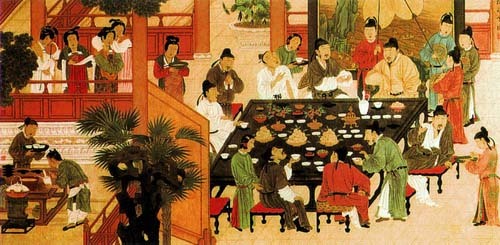
Finding Comfort in Tea in Ancient China and Now While sitting at home and finding comfort in tea during this pandemic health crisis, I have been thinking about the ancient nature of Chinese tea drinking. One of my favorite things about Chinese tea appreciation is its long storied tradition from ancient China until today. Trying to stay healthy and safe during a health pandemic, however, also has connected me to other ancient ideas: surviving a health crisis. I see a lot of people online rediscovering Boccacio’s 14th century “The Decameron”, the fact that Shakespeare and Issac Newton had to wait out the plague in confinement, or the 18th century book “A Journal of the Plague Year” written by Daniel Defoe. There’s definitely something fascinating about how living during a contemporary global pandemic health crisis makes you feel connected to these ancient health crisis like The Black Death or bubonic plagues. These ancient artifacts of disease and pestilenace are represented in my mind as such out of reach and outdated realities like Middle Age woodblock prints compared to our digital photographic present. While sipping Chinese tea in my apartment in the Bronx, right in the middle of the COVID epicenter in America, NYC in the spring of 2020, I started wondering about previous ancient crisis in China, in particular, and where tea fit in there. Surely there were pandemics in ancient China and surely there are ancient poems, paintings, or literature writings about tea in relation to crisis. With ancient China flourishing in the Tang Dynasty (618-907 AD), we are left with a rich amount of artifacts to rummage through and look for evidence and insights from ancient China. In the book “Tea in China, A Religious and Cultural History” by James Benn writes: “The values associated with tea today—that it is natural, health-giving, detoxifying, spiritual, stimulating, refreshing, and so on—are not new ideas, but ones shaped in Tang times, by poets.” But where to begin? I’m not a trained scholar in ancient Chinese poetry, artwork or literature. It takes me forever just to read an email in modern Chinese! It felt like googling in English to find artifacts about ancient Chinese crises and finding comfort in tea was like taking a handheld metal detector to the Pacific Ocean. So I turned to some scholar friends, namely Dr. Christine Ho, Assistant Professor of East Asian Art at U Mass Amherst, and Dr. Alfreda Murck, lecturer in Chinese Art History at Columbia University. Both Dr. Ho and Dr. Murck mentioned the famous tea poem “Seven Bowls of Tea” by Lu Tong, written in the Tang Dynasty. “Seven Bowls of Tea” is one of those texts that you see everywhere and its ubiquity almost renders it meaningless. It is, the kind of text you see excerpted and quoted in every single book about tea and especially Chinese tea, and the kind of text you see hanging on the wall of many Chinese teahouses. Is it the “Live Laugh Love” of Chinese tea? Almost. Anyways nevertheless it endures and has reached itself over 1300 plus years and halfway across the world into the consciousness of us here living our little lives in 2020 and into my own email inbox and computer screen in New York City, so it felt prudent to at least give it a new one over in the present moment. Poetry is a particularly important source for understanding tea in the ancient Chinese mind and culture. According to Benn, “Poets, as the cultural engineers of Tang times, had to invent a new world for tea to inhabit. Rather than create just a single cultural space, they made many, all of them interconnected to some degree.” So I read a translation which Dr. Murck sent me via email: SEVEN CUPS/BOWLS OF TEA Lu Tong (790-835AD) 一碗喉吻润 二碗破孤闷 三碗搜枯肠,惟有文字五千卷 四碗发轻汗,平生不平事尽向毛孔散 五碗肌骨清 六碗通仙灵 七碗吃不得也,唯觉两腋习习清风生 One bowl moistens the lips and throat; Two bowls shatters loneliness and melancholy; Three bowls, thinking hard, one produces five thousand volumes; Four bowls, lightly sweating, the iniquities of a lifetime disperse towards the pores. Five bowls cleanses muscles and tendons; Six bowls accesses the realm of spirit; One cannot finish the seventh bowl, but feels only a light breeze spring up under the arms. The one line that really did stand out to me, reading at the present moment is the second line: “Two bowls shatters loneliness and melancholy/二碗破孤闷.” As I began to contemplate the loneliness and melancholy that Lu Tong was describing I started connecting it to the loneliness many of us are experiencing as we are socially distant and isolated in our homes to prevent spread of COVID19 and help flatten the curve. When Lu Tong mentions melancholy it also feels so presently relevant to the societal wide melancholy or at least the palpable sense of dread, anxiety, and sadness that filled the air in New York City with the staggering death toll and round the clock sound of ambulances as it became an epicenter for the global health pandemic. While searching for different English translations of this second line “二碗破孤闷” in Lu Tong’s “Seven Cups of Tea” to compare to the first English translation I read, I came across a treasure trunk filled with shimmering jewels on the ocean floor of Google: the work of Steve W Owyang, his thorough and expert essays on this exact poem on Cha Dao (the most scholarly and nerdy of prominent asian tea appreciation blogs) http://chadao.blogspot.com/2008/04/lu-tung-and-song-of-tea-taoist-origins.html, and his own website Tsiophy (https://www.tsiosophy.com/). That moment when your handheld metal detector actually finds a gem in the ocean is truly an exciting one and it made my day. I poured through all of Mr. Owyang’s copious research and expert English translations that he generously shared on his website. We even started up a correspondance and he kindly pointed me in the direction of some poems on his website. Dr. Ho while also caring for a newborn baby (!), very generously pointed me in the direction of some books she thought me be helpful (that’s how I was able to find the previously quoted “Tea in China, A Religious and Cultural History”), and shared academic journal leads. Thanks to Dr. Ho sharing her academic pedigreed research abilities that really provided the backbone of this whole inquiry. Ok so all that research, thinking, and reading has illuminated a few ancient Chinese poems all 1000+ years old, related to finding comfort and solace in drinking tea that I would like to share with you. There is of course a lot of scholarship on the historical and cultural context of each of these poems and what each word might mean in relation to that but I will let you just read them without commentary and see how it might speak to you in the present moment: Joy at Seeing Tea Growing in the Garden Wei Yingwu (Tang Dynasty 618-907 AD) Its pure nature cannot be sullied, When drunk it cleanses dust and worries. This plant has a truly divine taste, And originates in the mountains. After I have taken care of my responsibilities, I plant a tea bush in my uncultivated garden. It is happy to grow with the other vegetation And to speak with a person in solitude. Translation in “Tea in China, A Religious and Cultural History” A Song of Drinking Tea on the Departure of Zheng Rong Jiaoran (Tang Dynasty 618-907 AD) The immortal Danqiu abandoned eating jade elixirs, Picking tea instead, he drank, and grew feathered wings. The world is unaware of the Mansion of Eminent and Hidden Immortals, People do not know of the Palace of Transmuting Bone into Clouds. The Lad of Cloudy Mountain blended it in a gold cauldron; How hollow the fame of the Man of Chu and his Book of Tea! Late on a frosty night, breaking cakes of fragrant tea. Brewed to overflowing, the pale yellow froth; I sip and am reborn. Bestowed by the gentleman, this tea dispels my suffering, Cleansing my mind from worry and fear. Come morning, the emotions of the fragrant brazier remain. Intoxicated still, we walk across the clouds reflected in Tiger Stream; In high song, I send the gentleman off. Translation by Steve Owyang After Eating Bai Juyi (Tang Dynasty 618-907 AD) Having done eating I go to sleep, Waking up, two bowls of tea. Raise my head to see the sun’s shadows, Already returned to being slanted in the southwest. A happy person regrets the fast disappearance of daylight, A sorrowful person feels sick of the slow passage of time. Those without worries nor delight, Simply let life be. Translation in “Tea in China, A Religious and Cultural History” And if after all that, you are like Charlene give me more ancient Chinese Tang poetry, I have more for you! In this month span when I’ve been working on this self-directed research paper (hahah, just me being me) I also learned from the New York Philharmonic Digital Mahler Festival that Gustav Mahler (Austro-Bohemian German speaking 19th-20th turn of the century classical music composer) himself was inspired by ancient Chinese Tang Dynasty poetry as a comfort to his own personal sorrows and crises. He composed his 9th symphony (its a long story how this is counted as 9th symphony or not vs just symphonic song cycle), known as Das Lied von Der Erde based on inspiration from German translations of Tang Poetry! You can listen to the music here with a spoken introduction on the background before the music starts. https://soundcloud.com/newyorkphilharmonic/sets/mahlers-complete-symphonies Ok so tell me what you think and how you felt reading these ancient Chinese poems about tea and what it means to you at the present moment while many of us are also turning to tea for comfort.
0 notes
Video
**GUEST APPEARANCE** On May 22, 1911 Gustav Mahler, an Austro-Bohemian composer and conductor was buried to his request, under a tombstone only with his name because "any who come to look for me will know who I was and the rest don't need to know."
https://en.wikipedia.org/wiki/Gustav_Mahler
Illustrated by Tal Klein
0 notes